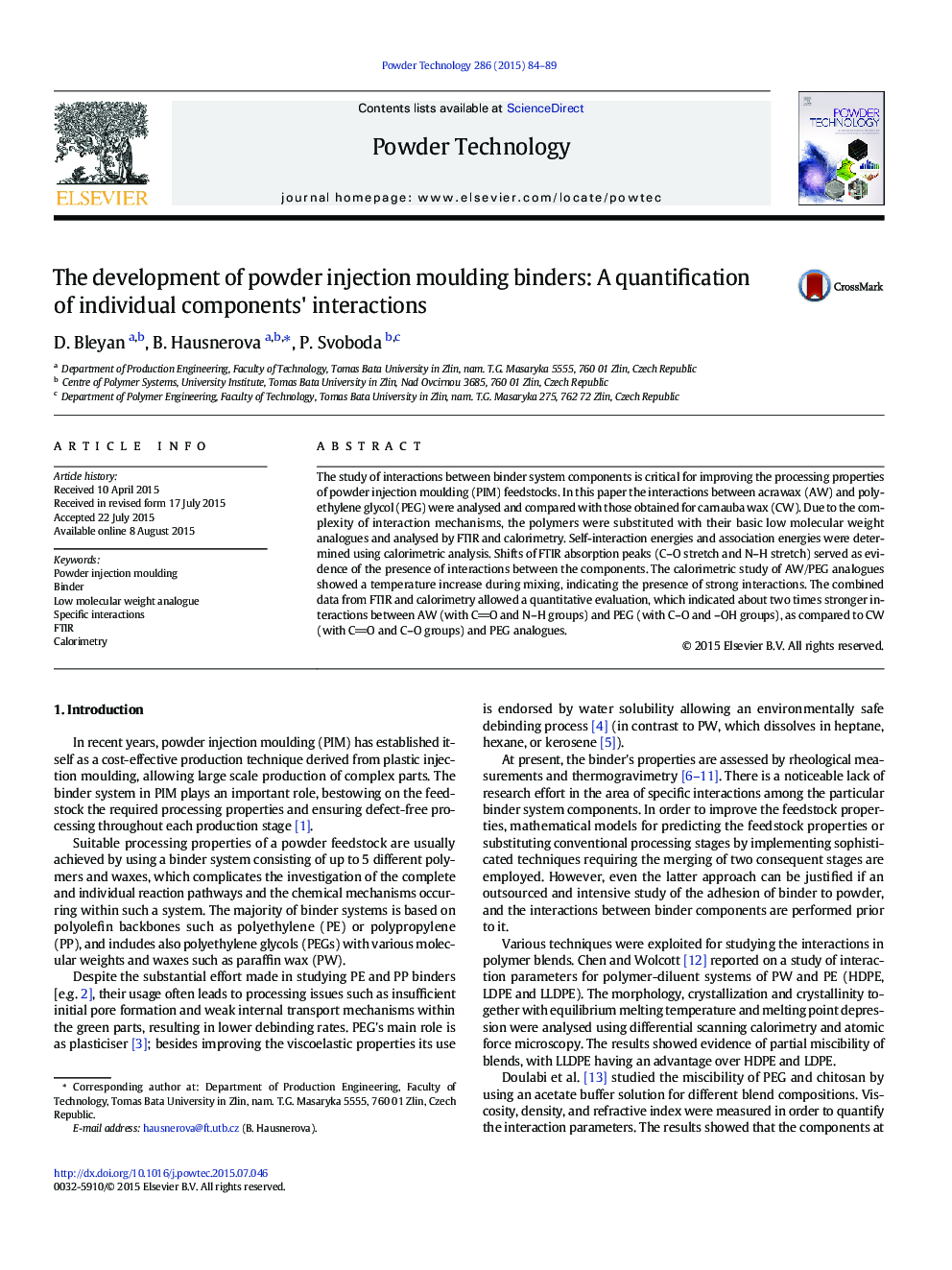| کد مقاله | کد نشریه | سال انتشار | مقاله انگلیسی | نسخه تمام متن |
|---|---|---|---|---|
| 235209 | 465631 | 2015 | 6 صفحه PDF | دانلود رایگان |
• Powder injection moulding binders substituted by their basic low molecular analogues
• Rarely used combination of FTIR and calorimetry allows quantification of interactions.
• The first time confirmed that acrawax to PEG has two times stronger interactions than carnauba wax to PEG.
The study of interactions between binder system components is critical for improving the processing properties of powder injection moulding (PIM) feedstocks. In this paper the interactions between acrawax (AW) and polyethylene glycol (PEG) were analysed and compared with those obtained for carnauba wax (CW). Due to the complexity of interaction mechanisms, the polymers were substituted with their basic low molecular weight analogues and analysed by FTIR and calorimetry. Self-interaction energies and association energies were determined using calorimetric analysis. Shifts of FTIR absorption peaks (C–O stretch and N–H stretch) served as evidence of the presence of interactions between the components. The calorimetric study of AW/PEG analogues showed a temperature increase during mixing, indicating the presence of strong interactions. The combined data from FTIR and calorimetry allowed a quantitative evaluation, which indicated about two times stronger interactions between AW (with CO and N–H groups) and PEG (with C–O and –OH groups), as compared to CW (with CO and C–O groups) and PEG analogues.
Figure optionsDownload as PowerPoint slide
Journal: Powder Technology - Volume 286, December 2015, Pages 84–89
